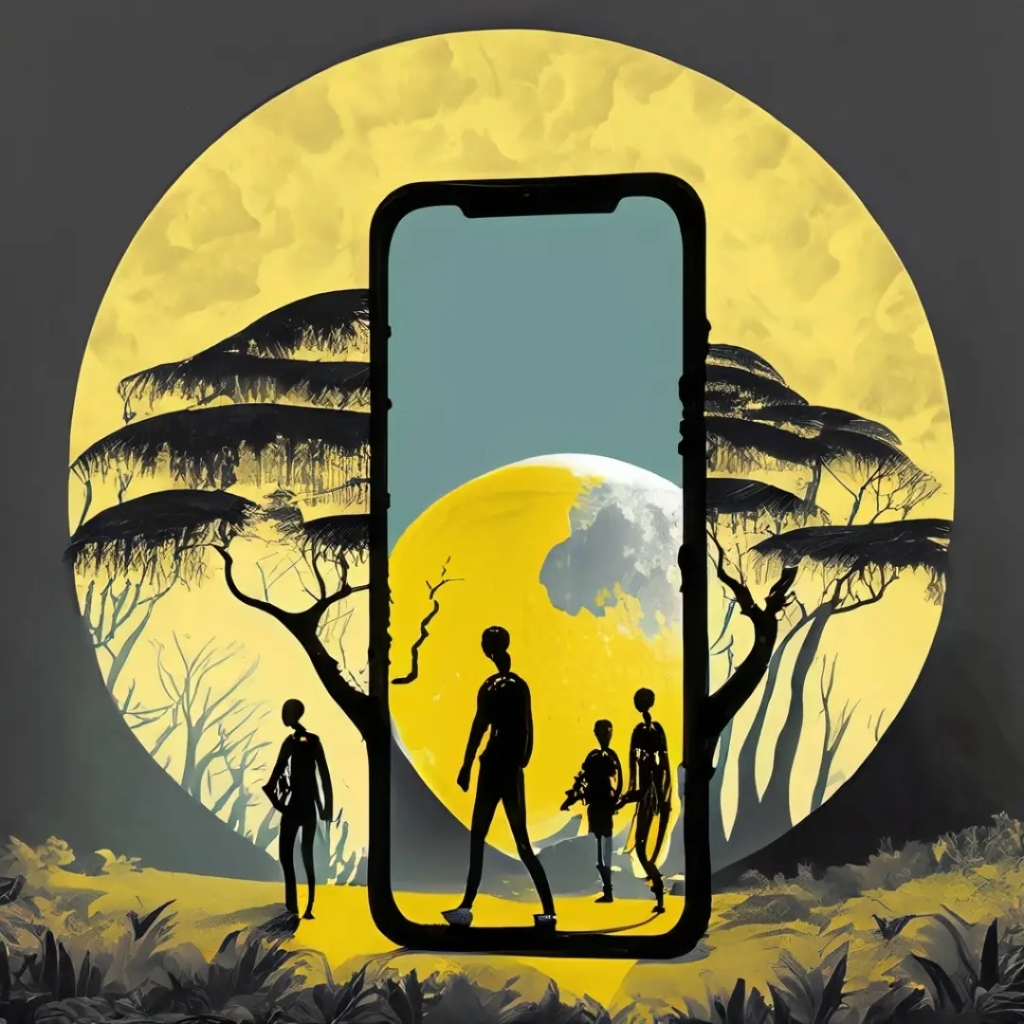
AN OVERVIEW OF THE DIGITAL WORLD OF FILM AND video content
In the digital culture a TikTok or Youtube creator, a video content producer for a website or brand and a filmmaker are the facets of the same artist. An artist whose work must emotionally connect with two different audiences: algorithms and humans. As filmmakers, we must learn how to make entertaining videoclips to humanize technology. As videomakers, we must learn how to tell stories in cinematic ways to catalyze emotions in the human public. Even though we operate at different levels of the moving images reality, we need each other’s knowledge, skills and maps to cross the algorithms’ universe and reach the human heart. Here is a quick overview of the online film and video content ecosystem to better see where our domains, needs and opportunities intersect.
Video PRODUCTION AND PROMOTION
Video content is the number one source of information for 66% of people and the most powerful component of an online content marketing strategy, with people watching an average of 19 hours of online video per week.
On the video-sharing social network YouTube, the second most the world’s most visited website and search engine after Google, with 2.2 billion monthly active users who watch over 5 billion videos per day, creators upload over 500 hours of video content every minute. 93% of brands earn new customers as a result of the production and promotion of video content. Facebook, the largest social network, has more than 8 billion video views per day, of which 85% are viewed with the sound off.
33% of Gen Z would consider purchasing digital-only art, a trend being NFTs or Crypto art, a new obsession. Many of the younger generation treat digital content as a traditional investment. For example, the musician 3LAU (Justin David Blau, an American DJ and music producer) offers the owners of his NFTs future royalties, and intellectual rights to his music. 3LAU is a pioneer at the intersection of music and blockchain technology; with his Ultraviolet collection of 33 different NFTs bringing him $11.7 million in early 2021 revenue, 3LAU provided a shining example of how NFTs have the power to disrupt the music industry.
On average, 40% of online video creators spend $0-500 on a typical video, with an overwhelming majority of 97% spending less than $10,00010, which also shows that things are more affordable than they seem, and that many constantly improve their creative skills by not being capped by perfection from the first stages of becoming.
Streaming platforms
Apart from the 5 giants, Netflix, Amazon Prime Video, Hulu, Disney+, HBO Max, there are more than 200 streaming platforms in the technologically dominant countries alone: USA, UK, Canada, India, Australia, China and none of them are like another. They play a complex game: they compete with the traditional major film studios, they buy and sell movies from each other, they both buy movies from the independent filmmakers, both compete with the independent creators.
Film festivals
Film festivals have moved a substantial part of their operations online with the pandemic, developing their own streaming platforms and strategies to distribute their film catalogs online. A 2013 study shows the existence of more than 3,000 active film festivals in the world, showing that at that time 9,706 film festivals had taken place at least once in the previous 15 years, revealing a number of more than 10,000 filmmakers. Today most have online extensions in one form or another.
Aggregators of online video content (end-to-end distribution)
Movies aggregators have multiplied rapidly with the pandemic, directly distributing authors’ creations on applications, streaming platforms, digital television and other terminals. In the field of film, a film aggregator is a service offered by platforms such as Bitmax, Filmhub, Quiver and others through which creators can distribute their film, short film or series on multimedia platforms such as Google Play, Sony PlayStation Network, Rakuten, Amazon (Prime Video ) and iTunes (Apple TV).
The main difference between film distributors and film aggregators is that distributors control all distribution and usually marketing for a film, while aggregators target creators directly (the self-distribution process), only giving them the opportunity to publish their project in networks where it can be purchased directly by users and often even by distributors and studios, giving them more control over their creations and the majority of the revenue from the box office. This brings us back to where we left off, the challenge and responsibility of marketing remain with the independent creators.
Video duration in the context of algorithmic culture
Looking at the duration of video content in this context, short and ultra-short formats dominate all social networks and the online and TV advertising industry, more recently and a considerable number of film festivals, from those dedicated to cinema to those dedicated to brand films or corporate cinema. TikTok, the ‘miracle’ social video-sharing platform focused solely on entertainment content, has risen above the competition with lightning speed through the ultra-short 15-second format, forcing its direct competition giants Facebook, YouTube, and Instagram to come up with counter-offers in the battle for creators and users.
And no, it’s not all crap on TikTok, there’s a surprising amount of really good content, which tells us that the new waves of filmmakers are coming from there because that’s where they are training, and unlike the existing generations, they’re coming with their audience, because they make a daily effort to form it, thus preparing themselves to meet the great opportunities. Creativity plays a more important role than ever in humanizing algorithms.
Short Films
Short films have seen a growing demand as emerging streaming platforms have come with the pandemic with a new online audience and an appetite for a greater diversity of content types. Short films and web series (with episode lengths between 5 and 20 minutes) have begun to gain remarkable traction, relevant examples here being Marshall Curry’s “The Neighbors’ Window” (2020), Netflix’s “Homemade” (2020) – produced by directors from all over the world, “Bloeistraat 11” by Nienke Deutz (2020) or impressive collections of ultra-short films developed by production studios like Barr Pictures Media or The Smalls – which operate under the slogan “20,000 ways to tell your story”(20,000 ways to tell your story).
The turbulent events of our times and the speed with which things develop require an instant response so that the realities around us make more sense. In this context, short film and video essay productions have proven to be more relevant and versatile compared to full-length films.
TITLE: the maker or breaker of our online films and videos
However, in every corner of the Internet we look, we are crushed by one point, the same as always: the title. In the context of the overproduction of video content and the unbearable diversity of options and possibilities, the numbers tell us everything we need to know about audience mechanics and algorithms: 80% of online users do not go beyond the title of a piece of content.
The data shows that magic numbers would be 7 or 11 words in the title (or 40-60 characters), that golden formulas contain numbers or questions, and that title aesthetics do make a difference (word association, length, shape, title, length, and punctuation).
The 4th reason people go online today is to watch movies, TV shows and video content. However, how many artists, independent filmmakers, and independent films are part of the math of this opportunity?
It is almost impossible to predict the future of the film industry, especially in the context of pandemics, social unrest and financial turbulence, economic instability in general. Ironically, however, the future is not as difficult to predict in the online world, a medium that is only growing.
Sources:
“Video Marketing Statistics 2022” Wyzowl, 2022.
“Hours of video uploaded to YouTube every minute as of February 2020“.
“25 Latest Facebook Video Statistics, Facts, And Trends” Blogging Wizard, 2022.
“New Materialists – People Are Investing in Digital Art and Creativity,” Think Forward, We Are Social, 2021.
“Largest NFT Sale Ever Came From A Business School Dropout Turned Star DJ“, Forbes, 2021.
“Video Fact Sheet” Content Science Review, 2022.
“The Complete List of Streaming Services in 2022: 200+ Services” Flixed Streaming Metadata API, 2022.
“How many film festivals are there in the world?” Stephen Follows: Film Data and Education, 2013.
“The 80/20 Rule Of Headlines” Digital Doughnut, 2019.
“6 Statistics for a Successful Headline From 50 Viral Articles” Medium, A. Alix, 2020.
“How Long Should a Social Media Video Be? Tips for Every Network” HootSuite, 2022.
